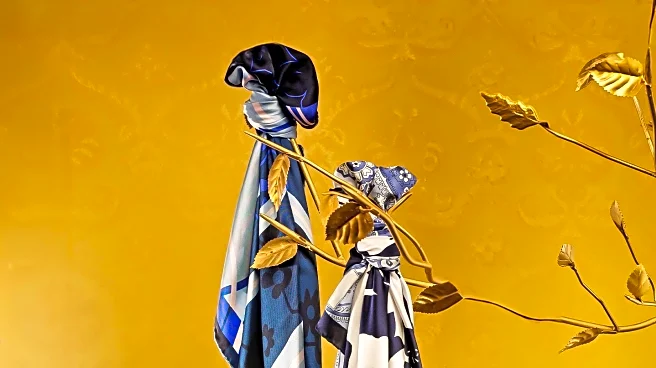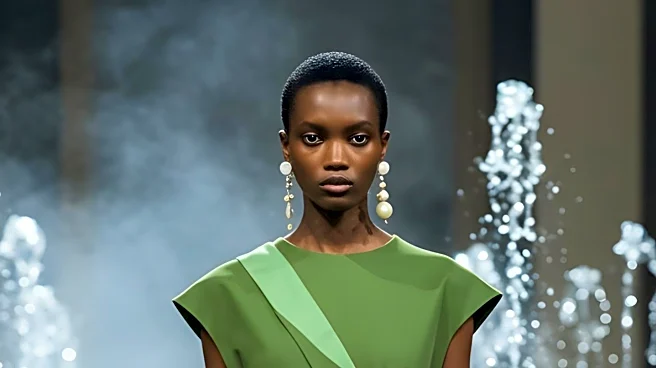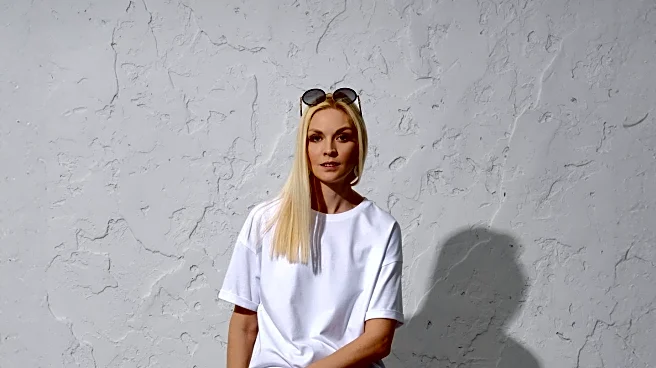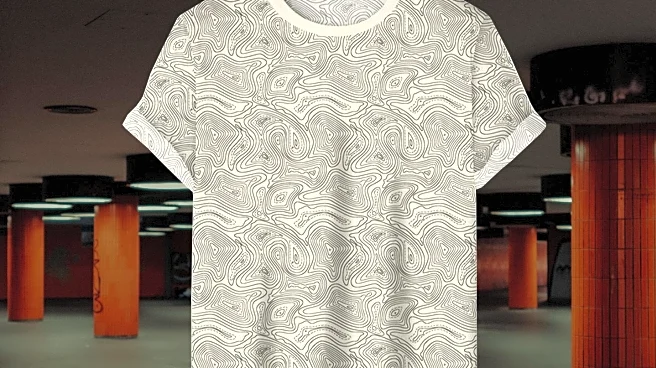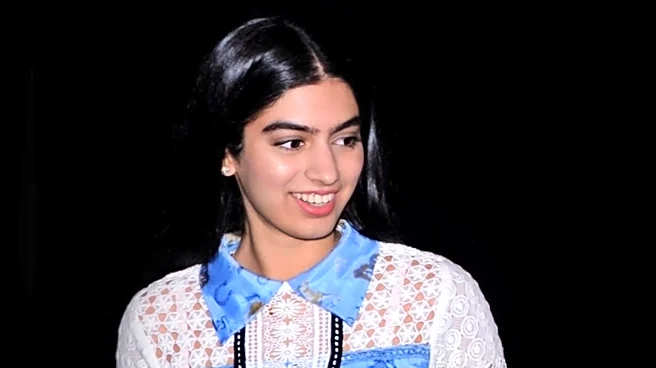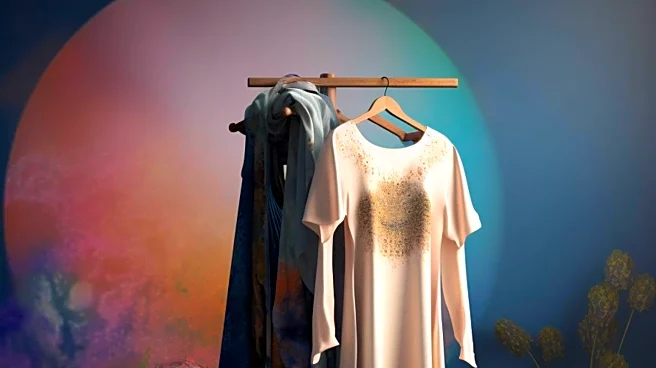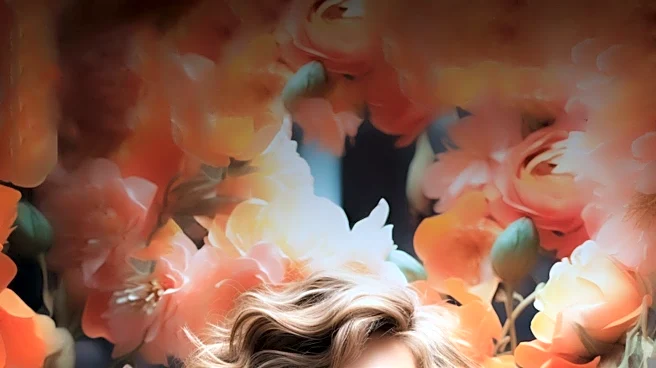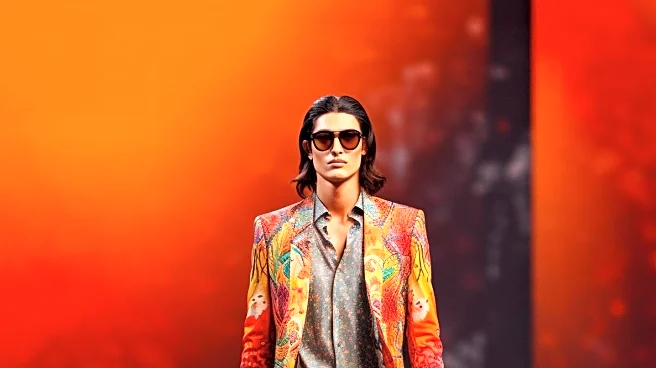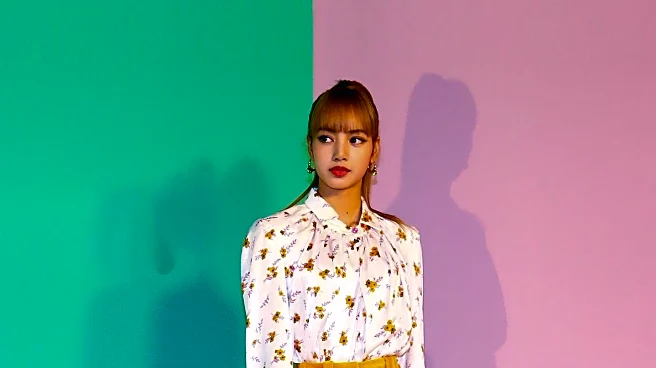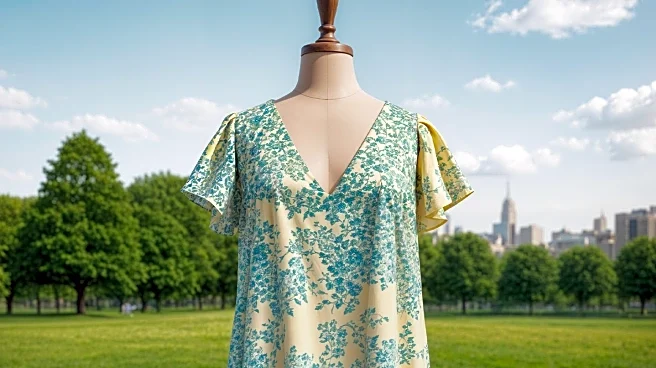What's Happening?
The fashion brand Who Decides War has unveiled its Spring 2026 ready-to-wear collection, drawing inspiration from damask fabrics. Designers Ev Bravado and Téla D’Amore were inspired by a previous Vogue review that suggested their fabrics resembled damask, prompting them to explore this textile further. The collection, titled 'Read the Room,' imagines a high-fashion wardrobe emerging from an old, decaying house, incorporating textural fabrics like damask, leather, denim, and lace. The collection features a range of garments, from casual wear to theatrical bridal gowns, with a focus on textural and decaying aesthetics. The designers aim to evoke a sense of beauty in disarray, with pieces that appear to be withering or awaiting demolition.
Why It's Important?
The Who Decides War Spring 2026 collection highlights the ongoing trend in fashion towards storytelling and thematic inspiration. By drawing from historical and cultural references, the designers create a narrative that resonates with audiences seeking depth and meaning in fashion. This approach not only distinguishes the brand in a competitive industry but also appeals to consumers interested in unique and thought-provoking designs. The collection's emphasis on textural fabrics and decaying aesthetics reflects broader trends in fashion towards sustainability and the use of unconventional materials. As the fashion industry continues to evolve, collections like this one demonstrate the potential for creativity and innovation in design.
Beyond the Headlines
The collection's focus on decaying aesthetics and unconventional materials raises questions about the role of fashion in addressing sustainability and environmental concerns. By using fabrics that evoke a sense of decay, the designers may be commenting on the transient nature of fashion and the importance of mindful consumption. This approach aligns with growing consumer interest in sustainable fashion and the desire for garments that tell a story beyond their immediate appearance. The collection also highlights the potential for fashion to serve as a medium for cultural and historical exploration, encouraging designers and consumers alike to consider the broader implications of their choices.
